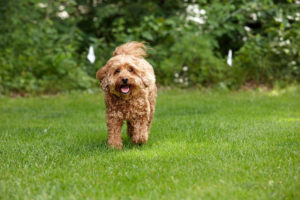Dog Fence Training Tips
The most important aspect of a DogWatch hidden fence, or any electric pet fence, is the training. The steps are simple and it doesn’t take very long, but it’s essential that it’s done correctly. These small adjustments will help training go more smoothly.
TRAINING SESSIONS
A typical training session consists of two laps around the yard, depending on your yard size. A dog’s attention span is fairly short, so don’t walk for laps and laps at a time or continue a training session for more than 20 minutes. After that timeframe, the dog is no longer learning anything.
Before, after or in the middle of a training session, take some time to play with your dog on the leash. If outdoor time is all about scary flags and corrections, it can be overwhelming and make your dog more nervous than he needs to be. Throw a ball in the air or just lay in the grass and pet your dog to remind him that the yard is still a fun place.
Talk to your dog and praise him while you take your training laps. That will help keep your dog’s spirits up and make sure he doesn’t associate you with the corrections. It’s all about the flags.
NERVOUS DOG
If your dog gets nervous, that’s OK. It’s very normal for dogs to get a correction and want to head for the house. The main thing to do is keep walking. Don’t let your dog dictate when the training session ends. Walk fast so your dog has to work to keep up with you.
It’s especially important to play with your dog outside if he’s nervous. During training, and after training if he continues to be nervous, play with his favorite toy outside and spend as much time as possible out there with him. Give him treats and belly rubs, and even feed him meals outside. That will allow him to feel more secure and use his whole yard.
GENERAL TIPS
Put your dog’s collar on every morning and take it off every night before bed. You don’t want him to know what the collar means. If it’s part of his routine, he won’t associate it with the boundaries outside.
Get your family members and neighbors involved with training. You want to make sure all of his normal distractions are covered so you can trust him once he’s off-leash.
Let your dog get the correction! You may want to save your dog from feeling the correction from his collar, but let him take that step past the flags to feel the correction. If he doesn’t feel the consequence of leaving the yard during training, he won’t stay in.
Call us! We want the training to be successful for you and your dog, so do not hesitate to call us along the way. If you’re having an issue, we’ve definitely heard it before and we can help get things back on track quickly.
